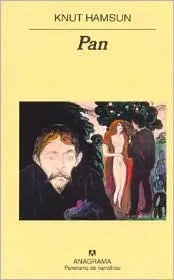Pan

A Journey Through the Wilderness of the Human Psyche: "Pan" by Knut Hamsun
Introduction: A Glimpse into the Mind of Knut Hamsun
Step into the enigmatic world of Knut Hamsun with "Pan," a novel that explores the complexities of the human psyche. Written in 1894, this literary masterpiece takes readers on a journey through the wilderness of both nature and the mind.
Pan's Symphony: A Synopsis
Nature's Symphony
"Pan" unfolds in the Norwegian wilderness, immersing readers in the raw beauty of nature. The protagonist, Lieutenant Thomas Glahn, seeks solace in the untamed landscape, forming a profound connection with the wilderness and its inhabitants.
Personal Anecdote: A Wilderness of Words
My first encounter with "Pan" was like entering a literary wilderness. Hamsun's evocative descriptions painted vivid landscapes in my mind, and the untamed beauty of nature became a backdrop for the unfolding drama of the human psyche.
Themes Explored: Isolation, Love, and the Enigma of Self
The Solitude of Lieutenant Glahn
Glahn's isolation in the wilderness mirrors the solitude of the human soul. The novel delves into the complexities of loneliness, exploring how one confronts oneself when surrounded by the vastness of nature.
Personal Anecdote: Solitude as a Mirror
As I read about Glahn's solitude, it triggered reflections on my own moments of aloneness. Hamsun's portrayal of isolation became a mirror, prompting contemplation on the ways we navigate our inner landscapes when left to our own devices.
Characters: Enigmatic Figures in Nature's Embrace
Lieutenant Glahn: A Complex Protagonist
Lieutenant Glahn is a complex character, embodying the contradictions of human nature. His interactions with nature, his dog Aesop, and the enigmatic Edvarda unfold in a symphony of emotions, adding layers to the narrative.
Personal Anecdote: Conversations with Characters
Engaging with Glahn's character felt like having conversations with the denizens of the wilderness. As his relationships with nature and those around him evolved, I found myself immersed in a dialogue that transcended the boundaries of the written page.
Hamsun's Literary Craft: A Pioneering Voice
Prose as Poetry
Hamsun's prose in "Pan" is akin to poetry, each sentence carrying a lyrical weight. The beauty of his language elevates the novel, turning the act of reading into a sensory experience that goes beyond storytelling.
Personal Anecdote: Poetry in Prose
Reading Hamsun's prose was like savoring poetry. The rhythmic flow of his sentences captured the essence of the wilderness, and I found myself underlining passages that resonated like verses in a personal anthology.
Impact and Legacy: A Pinnacle of Literary Achievement
Nobel Laureate's Legacy
Knut Hamsun, awarded the Nobel Prize in Literature in 1920, left an indelible mark on the literary landscape. "Pan" stands as a pinnacle of his achievements, showcasing his ability to weave a tapestry of words that transcends time.
Personal Anecdote: Literary Timelessness
Exploring Hamsun's legacy prompted me to revisit other works from Nobel laureates. The timelessness of "Pan" became a reminder of the enduring power of literature to transport readers across eras and cultures.
Conclusion: A Wilderness of Reflection
"Pan" by Knut Hamsun invites readers to navigate the wilderness of the human psyche—a terrain as unpredictable and captivating as the natural landscapes described in the novel. As Lieutenant Glahn grapples with isolation, love, and self-discovery, readers are drawn into a contemplative journey that transcends the boundaries of time and space.
So, whether you're a fan of literary classics or someone seeking a profound exploration of the human condition, "Pan" beckons as a timeless odyssey through the untamed wilderness of both nature and the soul.